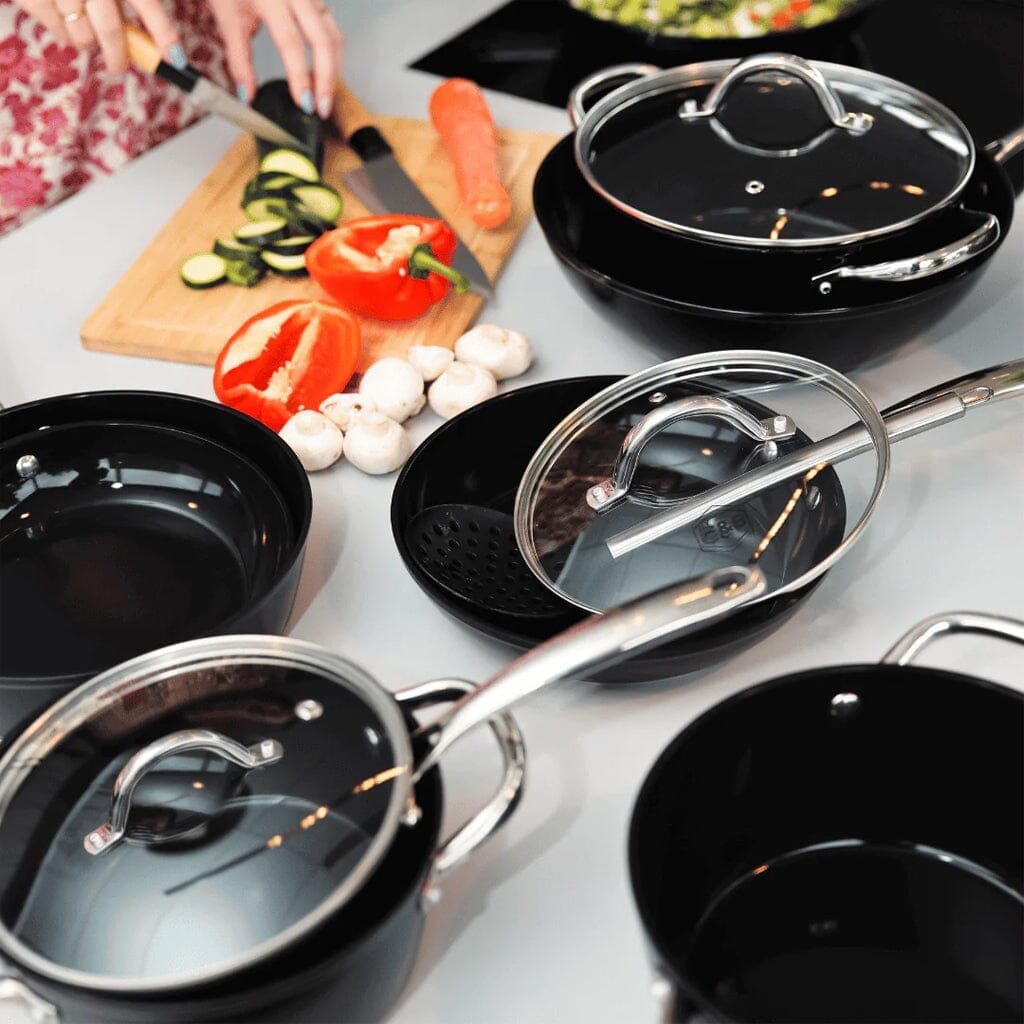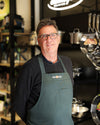PFAS-free pans: why switch to safe non-stick coatings?
Cooking is a daily ritual where safety and health should come first. Yet many people do not think about what is in their pans – literally. PFAS, a collective name for harmful chemical substances, is unfortunately still often found in traditional non-stick coatings. In this blog you can read why PFAS-free pans are a healthier alternative and what you should pay attention to when purchasing.
Here's what we're going to talk about:
- What are PFAS?
- Why are PFAS harmful?
- Benefits of PFAS-free pans
- How do you recognize a PFAS-free pan?
- Ready to cook consciously?
What are PFAS
PFAS (perfluoroalkyl and polyalkylene substances) are man-made chemicals that are water, grease and dirt repellent. Because of these useful properties, they are widely used in all sorts of everyday products such as non-stick pans, rain gear, food packaging and even cosmetics.
Why are they harmful?
Behind these 'handy' properties lies a major problem: PFAS hardly break down in the environment and in the human body. As a result, they accumulate, which can lead to serious health risks in the long term. Scientific research links PFAS to hormone disruptions, reduced fertility, increased cholesterol, liver problems and even kidney and testicular cancer.
Children and the elderly are particularly vulnerable. In children, PFAS can have a negative impact on the development of the immune system and learning ability. In the elderly, they can worsen existing health problems and reduce immunity.
It’s not just humans that are at risk — nature suffers too. PFAS can accumulate in animals, especially in species at the top of the food chain, such as birds of prey and marine mammals. The consequences? Ecosystem degradation and an increased risk of extinction for vulnerable species.
Benefits of PFAS-free pans
- Healthier cooking: PFAS-free pans do not contain any harmful substances that can be released when heated. This prevents the risk of toxic fumes or chemical residues in your food.
- Better for the environment: Because PFAS hardly break down in nature, they can continue to wander around in water, soil and animals for years. By choosing PFAS-free pans, you contribute to a cleaner world without these 'forever chemicals'.
- Durable and sturdy: Many PFAS-free cookware is made from materials like ceramic, stainless steel, or cast iron — materials known for their durability. With proper use and care, they can often outlast traditional nonstick cookware.
- Safe for the whole family: Especially when you cook for children, you want as few harmful substances in your home as possible. With a PFAS-free pan, you reduce the chance of exposure to chemicals that can affect the development of the body.
- Less worry in the kitchen: No more fear of an overheated pan or scratchy spatula dislodging harmful particles. PFAS-free pans are often resistant to high temperatures and can withstand more without compromising safety.
How do you recognize a PFAS-free pan?
You can recognize a PFAS-free pan by clear product information. Please note:
- Labels such as “PFAS-free”, “PTFE and PFOA free” or “100% ceramic”.
- Materials such as ceramics, stainless steel, cast iron or enamel — these do not naturally contain PFAS.
- Mentioned on the packaging or product page. No info? Then it is often not PFAS-free.
Doubts? Always ask!
Ready to cook consciously?
By choosing a PFAS-free pan, you are making a healthier choice for yourself, your family and the planet. At KookGigant, we only sell PFAS-free pans, so you can cook with peace of mind. Take a look at our range today and discover safe, sustainable pans without harmful substances.
FAQ
-
What exactly does 'PFAS-free' mean?
A pan that is PFAS-free does not contain poly- and perfluoroalkyl substances. These substances are often used to make surfaces water, grease and dirt repellent, but are harmful to both people and the environment. PFAS-free therefore means safer cooking for you and your family. -
Are all ceramic pans automatically PFAS-free?
Usually, but not always. Pay close attention to the product information: some pans are sold as 'ceramic', while they still contain a chemical non-stick coating with PFAS. Always check whether it explicitly states 'PFAS-free', 'PTFE/PFOA free' or '100% ceramic'. -
Is Teflon the same as PFAS?
Teflon is a brand name for PTFE — a common form of PFAS. So yes, a pan with a Teflon coating contains PFAS and can release harmful substances when heated. -
How do I know if my current pan contains PFAS?
Check the label or product description. Do you see terms like 'PTFE', 'Teflon', or is there no clear mention of 'PFAS-free'? Then your pan probably contains PFAS. Not sure? Contact the manufacturer or switch to a proven PFAS-free pan. -
Do PFAS-free pans work as well as regular non-stick pans?
Absolutely! Many PFAS-free cookware (such as ceramic or cast iron) perform excellently: they are heat-resistant, wear-resistant and often even last longer. And you cook without health risks — ideal for families with young children or the elderly. -
Which brands offer PFAS-free pans?
Well-known brands include GreenPan, Cook & Pan, Eurolux and Le Creuset. Please note: not every product within a brand is automatically PFAS-free. At KookGigant we make it easy for you — we only sell PFAS-free pans.


